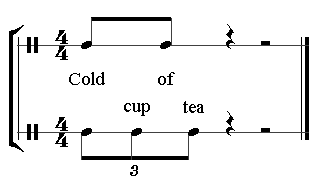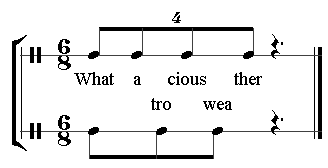snobographer
n. one who describes or writes about snobs
Search Results for: in a word
In a Word
uglyography
n. bad handwriting; poor spelling
In a Word
opiniaster
n. one who obstinately holds to an opinion
In a Word
afterwit
n. knowledge gained too late to do any good
In a Word
jentacular
adj. pertaining to breakfast
In a Word
hadeharia
n. constant use of the word “hell”
In a Word
wittol
n. a man who knows of and tolerates his wife’s infidelity
In Other Words
In the 19th century, British polymath William Barnes tried to reform English by limiting it to words of Saxon-English origin. Where no “Teutonic” words were available to express his meaning, he made up alternatives, such as sky-sill for horizon, glee-craft for music, wort-lore for botany, hearsomeness for obedience, somely for plural, and folkwain for omnibus.
In 1948, Richard Lister challenged the readers of the New Statesman to write the opening paragraphs of a novel set in present-day London in this style of reformed English. Reader D.M. Low offered this:
As Ernest was wafted up on the dredger from the thorough-hole at Kingsway he was inwardly upborne to see Pearl again; but, alas, evenly castdown for the blue-eyed bebrilled booklearner was floating downwards on the other ladderway. It was now or never. Ernest fought back against the rising stairs and the gainbuildfulness of hirelings bound for work. Pushing aside fingerwriters, shophelpers and even deeded reckoning-keepers, by an overmanly try he reached the bottom eventimeously with Pearl.
‘What luck! Can you eat with me tonight? I know a fair little upstaker near here.’
‘Oh! I can’t. My Between-go is in Fogmonth, and I must get through and …’
The rumble of the ambercrafty wagonsnake drowned her words.
‘Hark! There’s the tug. I must fly.’
It was hard to be wisdomlustful. Forlorn in his trystlessness Ernest sought Kingsway again and dodging hire-shiners and other self-shifters recklessly headed towards the worldheadtownly manystreakiness of the Strand.
He appended this glossary:
dredger: escalator.
ladderway: escalator.
upborne: elated.
evenly: equally.
bebrilled: bespectacled, (German Brille).
booklearner: student.
gainbuildfulness: obstructiveness.
fingerwriters: typists, cf. dattilografa.
deeded reckoning keepers: chartered accountants.
overmanly: superhuman.
eventimeously: simultaneously.
upstaker (less correctly upstoker): restaurant.
Between go: student slang for Between while try out i.e., Intermediate Examination.
Fogmonth: November.
ambercrafty: electric, lit. electric powered.
wagonsnake: train (archaic and poet.).
tug: train cf. German Zug.
wisdomlustful: philosophical.
trystlessness: disappointment.
hire-shiners: taxis.
self-shifters: automobiles.
manystreakiness: variety.
worldheadtownly: cosmopolitan.
Other readers had suggested eyebiting for attractive, lip-hair for moustache, slidehorn for trombone, and smokeweed for cigarette. The winning entries are here.
Words and Music

Wikimedia user Tarquin points out that the natural rhythm of spoken language can be used to teach polyrhythms.
Above: The phrase “cold cup of tea,” spoken naturally, approximates a rhythm of 2 against 3.
Below: The phrase “what atrocious weather” approximates 4 against 3.

In Other Words
Raymond Queneau’s 1947 book Exercises in Style tells the same story in 99 different ways, from telegram to ode:
Narrative:
“One day at about midday in the Parc Monceau district, on the back platform of a more or less full S bus (now No. 84), I observed a person with a very long neck who was wearing a felt hat which had a plaited cord round it instead of a ribbon. …”
Apostrophe:
“O platinum-nibbed stylograph, let thy smooth and rapid course trace on this single-side calendared paper those alphabetic glyphs which shall transmit to men of sparkling spectacles the narcissistic tale of a double encounter of omnibusilistic cause. …”
Sonnet:
“Glabrous was his dial and plaited was his bonnet,
And he, a puny colt — (how sad the neck he bore,
And long) — was now intent on his quotidian chore —
The bus arriving full, of somehow getting on it. …”
In response, Colin Crumplin’s 1977 book Hommage à Queneau features 100 different drawings of a cup, and Philip Ording’s 99 Variations on a Proof proves the same mathematical result in 99 different ways.
